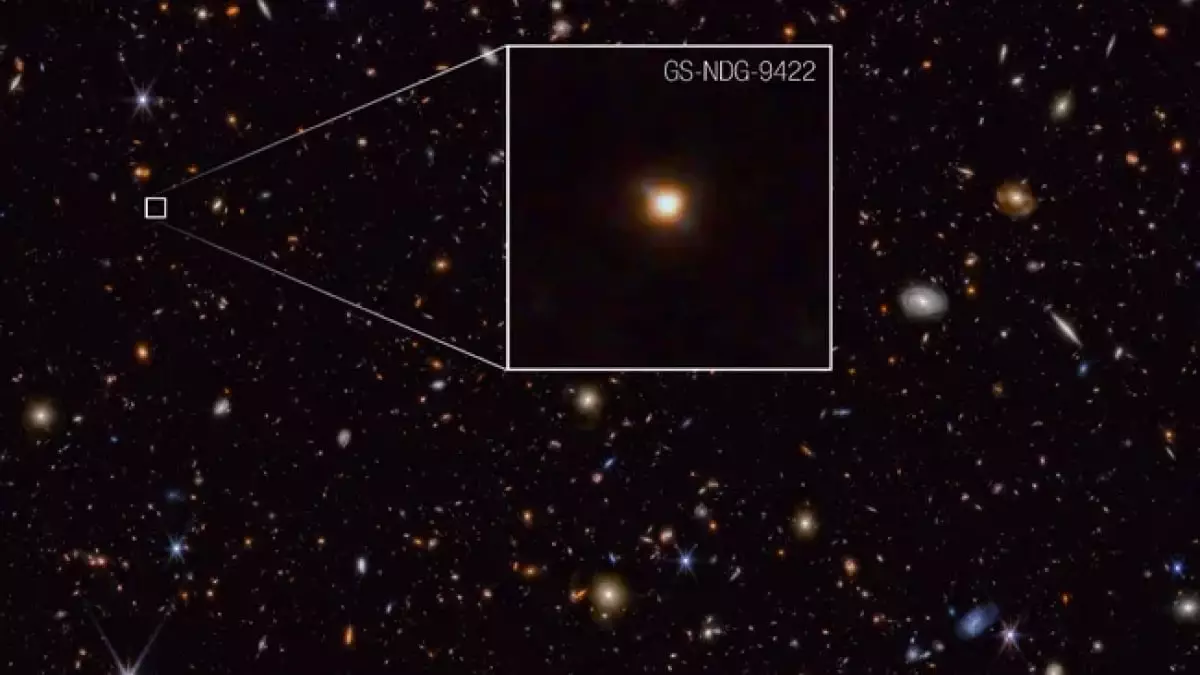The James Webb Space Telescope (JWST), an astronomical powerhouse, has once again redefined our understanding of the cosmos with its latest discovery. This time, it has unearthed a galaxy that existed approximately a billion years after the Big Bang, an era crucial to our comprehension of cosmic evolution. This discovery not only provides a rare window into the formative years of the universe but also challenges existing paradigms about the development of galaxies and their stellar populations.
Gas Clouds: The Unexpected Dominance
One of the most astonishing features of this galaxy is the overwhelming brightness of its gas clouds, which outshine the stars within it. Typically, direct observation leads us to believe that stars are the primary luminaries in galaxies; however, this unique galaxy flips this narrative on its head. It raises profound questions about the conditions in the early universe. The presence of luminous gas clouds suggests a vastly different environment than what astronomers have long believed existed during these early epochs. This exceptional aspect could illuminate how stars interacted with their surrounding materials, potentially leading to the formation of new stars and influencing the development of future galaxies.
Adding to the intrigue, the galaxy boasts stars that are significantly hotter than those commonly found in modern galaxies. These stars are not just blazing hot; they also contain heavier elements, which is a remarkable finding considering that the original stars were primarily composed of hydrogen and helium. The presence of these elements indicates a pivotal moment in the galactic lifecycle, suggesting that nucleosynthesis was actively taking place, allowing for the transformation from simple to complex elements. This phenomenon provides vital clues about the late stages of the universe’s formative years, further bridging the gap between the simplicity of the earliest stars and the complexity we see today.
The implications of this discovery stretch far beyond just a singular galaxy, highlighting a fundamental shift in our approach to understanding cosmic evolution. With the JWST’s advanced observational capabilities, astronomers are now equipped to peer deeper into the cosmos than ever before. The discoveries that stem from studying similar galaxies will likely paint a grander picture of how stellar systems and galaxies formed amid the turmoil of the early universe. As researchers sift through this data, each find contributes incrementally to unraveling the intricate tapestry of cosmic history, offering insights into the mechanics behind galaxy formation and stellar evolution.
As we continue to harness the capabilities of the JWST and its innovative technologies, the horizon of what we know about the universe will undoubtedly expand. The galaxy unearthed in this investigation represents merely the tip of the iceberg. The quest to comprehend how stars and galaxies sprang from the chaotic aftermath of the Big Bang is just beginning. Future explorations promise to deepen our understanding and possibly lead to groundbreaking revelations in the field of astrophysics, reshaping our theoretical frameworks for years to come. The excitement surrounding these discoveries underscores a pivotal era in astronomy, one that bridges the past and future of our cosmic narrative.

Leave a Reply